Delhi secret tunnel sparks grisly speculation
- Published
Exploring the mysterious tunnel under the Delhi state assembly
There are few things as redolent of mystery and adventure than a secret tunnel.
So the hidden passage discovered recently beneath the colonial building that used to house the Indian parliament has prompted all kinds of exotic and grisly speculation.
The building dates from 1911, when the British moved the Indian capital from Calcutta (now Kolkata) to Delhi, and is a fine example of the architecture of the period.
Walk through the grand arched doorway and you find corridors with all the hardwood panelling you would expect in a classic Edwardian expression of imperial majesty and might.
The tunnel is beneath the floor of the parliamentary chamber itself, now the home of Delhi's local city government.
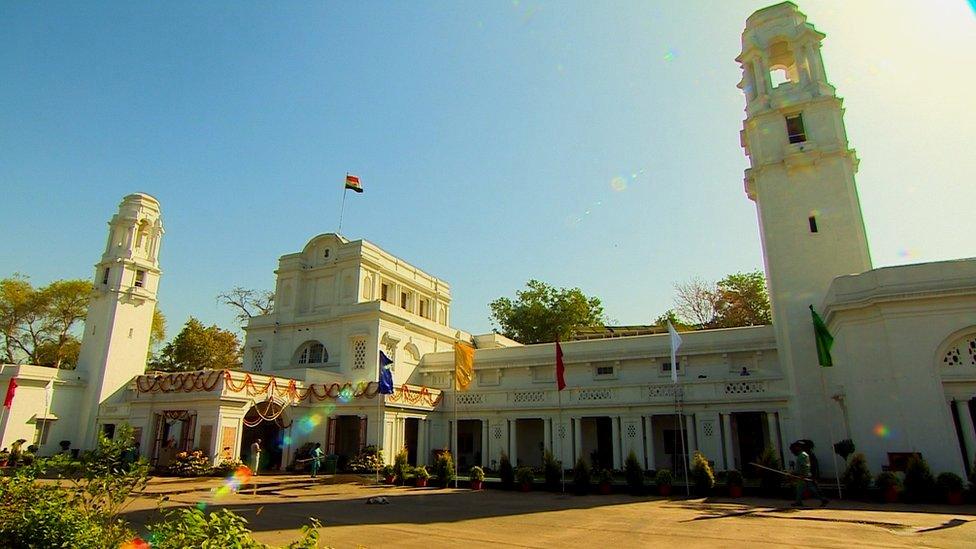
The tunnel was discovered recently beneath the colonial building that houses the Delhi legislative assembly
Just as you would expect, the entrance is hidden.
Peel back a flap of the green carpet and you find a hatch.
Poking my head in, I see a shallow chamber, perhaps 5ft (1.5m) deep and 15ft (4.5m) wide and - tantalisingly - another smaller passage stretching away under the chamber floor.
The tunnel was rediscovered by the speaker of the assembly, Ram Niwas Goel. He says he heard rumours of its existence from staff.
He believes it served a ghoulish purpose when in 1926 the parliament was moved to new buildings in central Delhi, and the building became a courtroom.
He says it was used to ferry prisoners from the Red Fort - the great Mughal-era complex of fortified buildings where the British used to hold political prisoners.
"They brought them through the tunnel into the courtroom," says Mr Goel. "They were taken from here to be hanged, there was a room here."
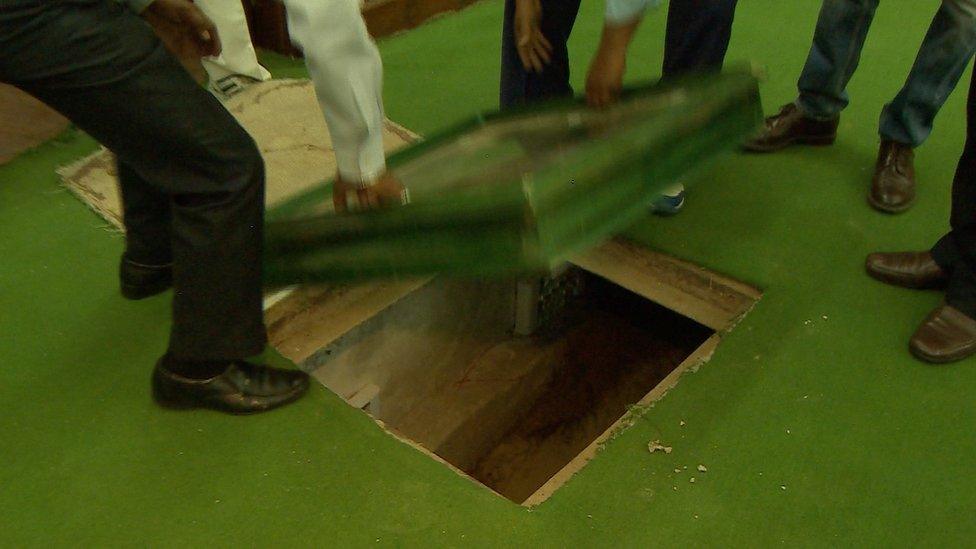
Men unveil the mouth of the tunnel...
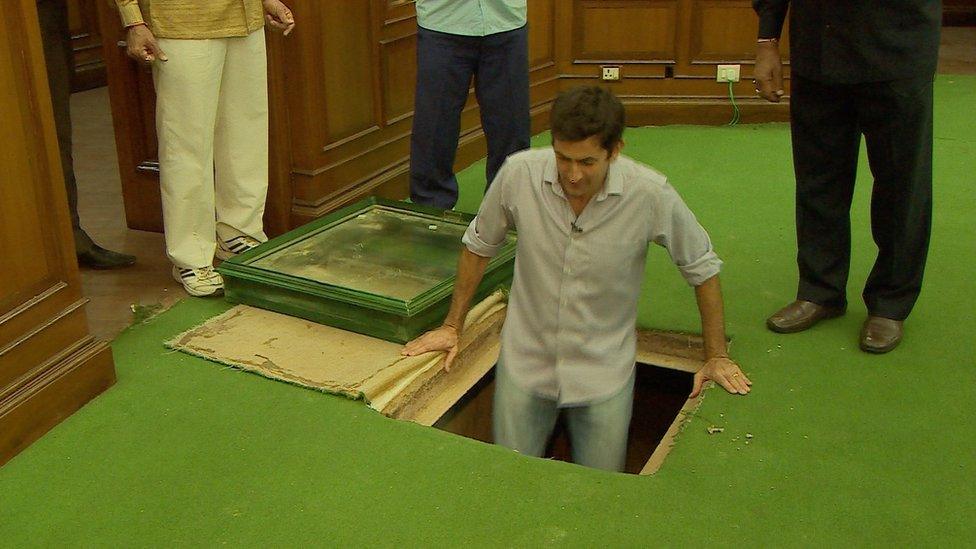
... And Justin Rowlatt jumps in

The passageway is intriguing
He wants the tunnel preserved for posterity, a reminder of the oppression Indian freedom fighters suffered under the British.
Naturally I want to go into the tunnel.
I jump down into chamber. The intriguing passageway is a narrower fit, perhaps 3sq ft (0.27sq m).
It passes through a series of brick walls. The floor is strewn with rubble and slopes gently downwards towards the well of the assembly chamber.
It is perhaps 25ft (7.5m) long and ends abruptly with a wall.
Mr Goel says it has proved impossible to excavate further because the course of the tunnel has been blocked by the foundations of new buildings, the footings for flyovers as well as sewers and other utilities.
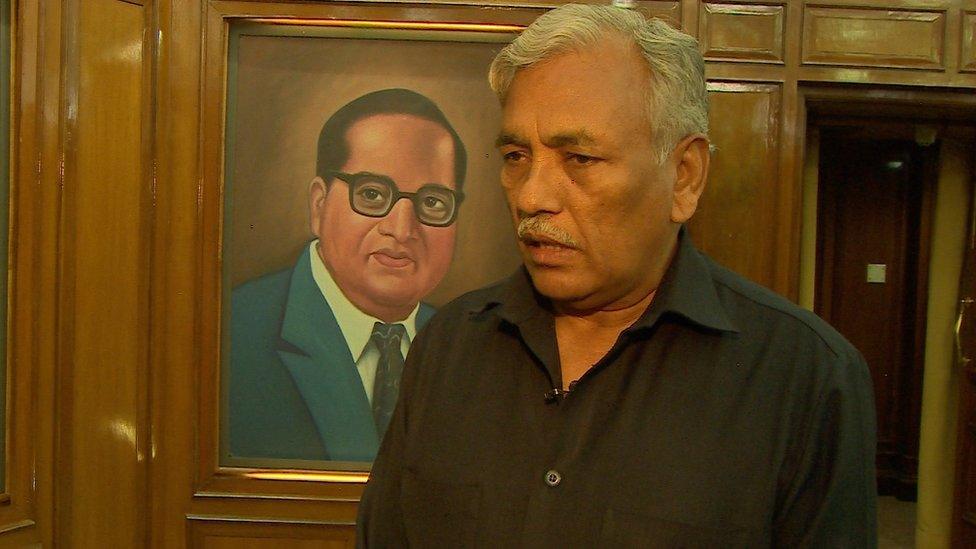
The tunnel was rediscovered by Delhi assembly speaker Ram Niwas Goel after he heard rumours of its existence from staff
But he plans to protect what is left.
"This is a very important part of the independence struggle of Indians fighting against British rule. I will preserve the tunnel so it can be visited by Indians from time to time."
Outside in the bright spring sunshine, I meet historian William Dalrymple.
"Delhi is full of legends of underground passages," he tells me. "Some of the big havelis [noble houses] of the Mughal noblemen had tunnels leading to the Red Fort, and there are also stories from the 18th Century of Mughal princes escaping through tunnels out of the Red Fort."
But Mr Dalrymple is sceptical of Mr Goel's theory.
"There is no question that freedom fighters were sentenced to death in the building," he says, but he questions the idea that the British would build a tunnel all the way from the Red Fort - 4 miles away (6.5km) - simply to transport prisoners.
"That would be a huge undertaking and there was no need, the British had military control, they could drive prisoners through the streets without any fear."
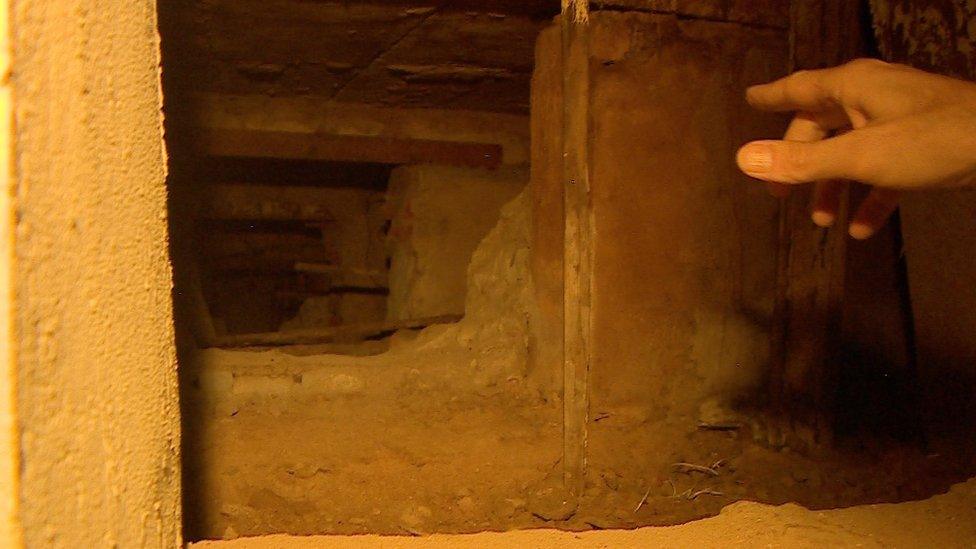
The tunnel is about 25ft (7.5m) long and ends abruptly with a wall
Instead, he speculates that the tunnel could date back to an earlier, and even bloodier period of British rule in India, the great rebellion of 1857.
In India the conflict is known as the First War of Independence, in Britain it is known as the Indian Mutiny.
It was the largest anti-colonial revolt to take place anywhere in the world in the 19th Century.
The uprising began as a mutiny of sepoys - Indian soldiers in the East India Company's army - but exploded into a full-scale revolt.

Historian William Dalrymple says Delhi is full of legends of underground passages
And, says Mr Dalrymple, the land where the former parliament building stands was a key battleground.
"This area, now green with lovely lawns and colonial buildings was then a burnt out battlefield. This was the no-man's-land between the two forces. This is where the fate of British India was decided. Like the World War One there was tunnelling and counter-tunnelling, and night raids trying to come up behind enemy lines - all that kind of thing."
The rebellion of 1857 is an important, and largely forgotten, period in Britain's colonial history, he argues.
"It was the darkest days of British rule because tens of thousands of innocent Indian civilians were killed by the vengeful British troops. This tunnel may well be a grisly reminder of that moment, this great anti-colonial uprising that was put down with unbelievable severity."
But, of course, there is another, albeit more mundane, possibility.
The tunnel could just be some kind of a cellar beneath the building.
Some historical mysteries are never solved.